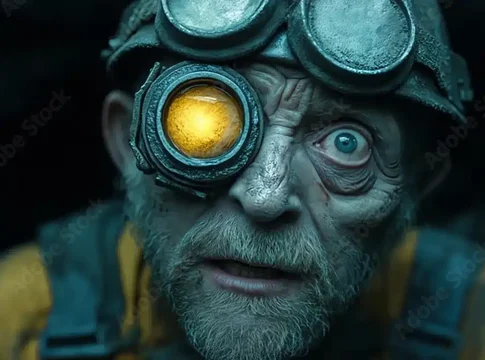Unpacking the ‘Cinema of Extractions’: A Deep Dive into Film’s Raw Materials
A Cinematic Coal Shuffle
Let’s set the scene: in The Brutalist, a 2024 film by Brady Corbet, we find renowned architect László Tóth (played by Adrien Brody) shoveling coal after losing his job to the fiery Harrison Lee Van Buren (Guy Pearce). This gritty task, laden with symbolism, reinforces a broader conversation about the materials that prop up our cinematic narratives. Tóth might be covered in soot, but his humble labor makes us question—how often do we think about where our films come from?
The Birth of a New Lens
Enter Brian Jacobson’s intriguing book, The Cinema of Extractions: Film Materials and Their Forms. Inspired by a cheeky quote from Charlie Chaplin, Jacobson takes us on a whirlwind tour of cinema’s extractive roots. He lays bare the intimate connection between early film and the era’s booming industries—oil, aviation, and, of course, movies themselves.
Jacobson argues that the very components of cinema can be viewed as extensions of "extractive industries." Think about it: the projections, the coal, the oil—each plays a role not just in film’s production but in crafting the narratives we consume. And nope, he’s not just tossing buzzwords around. This is a meticulously researched work that challenges us to rethink what we see on screen.
A Mixed Bag of Insight
Now, let’s be real. While Jacobson’s excitement about the historical underpinnings of film can be infectious, there are parts of this book that feel like they belong in a PhD seminar rather than your cozy couch. He dives deep into the academic weeds, and some passages are downright head-scratchers. But hey, any worthwhile journey has its bumps, right?
Finding Connection in Context
In a world where films are often reduced to mere products, Jacobson calls on us to flip the script. His term "worlding process" is particularly captivating—suggesting that cinema does more than just reflect reality; it actively shapes it. So, instead of sitting back and letting the flickering images wash over us, why not engage with them?
A Call to Action
In short, The Cinema of Extractions is a call to recalibrate our film-viewing habits. Let’s not just consume media; let’s dissect it, unravel its layers, and identify the raw materials that forged it. Sure, the book can be a slow burn at times, but the insights it offers are worth the effort. It encourages us to plunge deeper into film analysis and recognize cinema as a dynamic participant in our cultural landscape.
So, grab your popcorn—you’re going to want to take a closer look at your next movie night.

Covers viral stories, pop culture, and breaking celebrity news.
Bio: Jamie has a sharp eye for what’s buzzing online, tracking social media trends and entertainment headlines around the clock.

